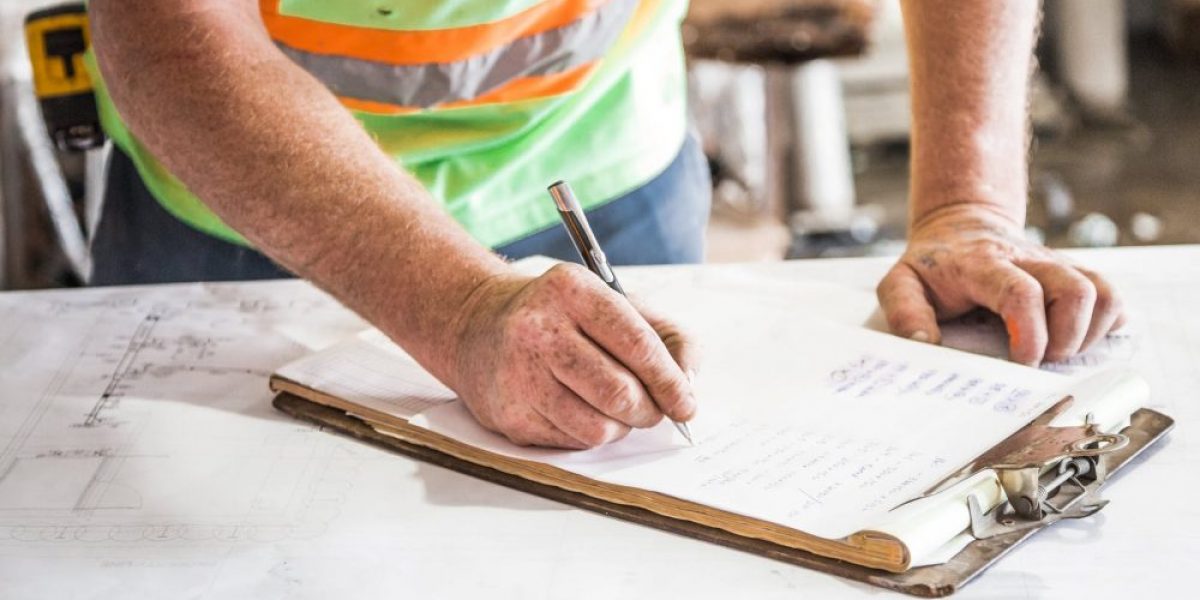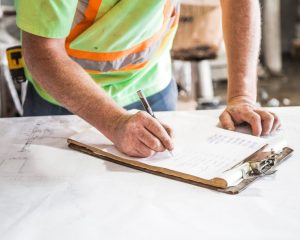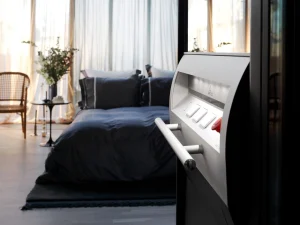Understanding LOLER Inspections: Your Essential Guide
A LOLER inspection is a comprehensive check of lifting equipment, a legal requirement in the UK designed to keep operations safe and prevent accidents. By systematically examining equipment like cranes, hoists, and lifts, these inspections ensure you meet the Lifting Operations and Lifting Equipment Regulations 1998 (LOLER), safeguarding your workplace, legal standing, and operational efficiency. This guide will cover what LOLER means, its regulations, the inspection process, the role of a competent person, how often inspections are needed, equipment covered, compliance benefits, the risks of not complying, how technology can help, and where to find official guidance.
Prepared by: MW Lift Services Credentials: HSE-Approved Lifting Equipment Engineers Date Updated: 26th May 2024
What Exactly is LOLER and What Do the Regulations Say?
LOLER stands for the Lifting Operations and Lifting Equipment Regulations 1998. These are UK laws that ensure lifting equipment is designed, maintained, and used safely. They stem from the Health and Safety at Work etc. Act 1974 and place duties on employers, equipment owners, and operators to prevent accidents involving lifting.
The Cornerstone of Workplace Safety Health and Safety at Work etc. Act 1974
The Health and Safety at Work etc. Act 1974 lays down the fundamental legal framework for workplace safety across the UK, outlining the responsibilities of both employers and employees to maintain a secure working environment. This includes the safe operation of lifting equipment, a subject further detailed within the Lifting Operations and Lifting Equipment Regulations 1998 (LOLER).
This foundational legislation underpins LOLER regulations, clearly defining the legal obligations for workplace safety.
What Does LOLER Mean in Full?
LOLER, or the Lifting Operations and Lifting Equipment Regulations 1998, places legal responsibilities on any organisation or individual involved in planning, managing, or carrying out lifting operations. It covers both the lifting equipment itself and the methods used for lifting and lowering loads.
What are the Key Requirements of the LOLER 1998 Regulations?
Before any lifting equipment can be used, it must be:
- Built to last and designed correctly, meeting safe working load (SWL) standards.
- Checked before each use by the person operating it.
- Thoroughly inspected by a qualified professional at set intervals.
- Clearly marked with its SWL and a unique identifier for easy tracking.
These measures are in place to prevent mechanical failures, overloading, and incorrect usage.
Who is Responsible Under LOLER?
- Ensuring equipment is suitable and properly maintained.
- Arranging for regular thorough examinations.
- Keeping detailed written records of examinations.
- Rectifying any faults before the equipment is used again.
These duties ensure accountability and maintain high safety standards.
How Does LOLER Compare to Other Regulations Like PUWER?
While LOLER specifically addresses lifting operations and equipment, PUWER (Provision and Use of Work Equipment Regulations 1998) covers the safety of all types of work equipment. LOLER builds upon PUWER by requiring more in-depth mechanical inspections and specific marking for lifting gear, whereas PUWER focuses on broader aspects like ergonomics and guarding.
What is a LOLER Inspection and What Does it Involve?
A LOLER inspection, often referred to as a thorough examination, is a detailed mechanical and visual assessment of lifting equipment. Its purpose is to confirm that the equipment is safe, stable, and compliant with legal standards. This process helps identify hidden faults, measure wear and tear, and verify that load-bearing components meet SWL requirements.
What Constitutes a Thorough Examination Under LOLER?
A thorough examination involves assessing the condition of all critical lifting equipment parts, including hooks, chains, ropes, frames, and control systems. It combines visual checks, functional tests, and measurements of key dimensions to detect any signs of deformation, corrosion, or fatigue before a failure can occur.
Ensuring Lifting Equipment is Safe Through Thorough Examination HSE, INDG290 Guidance for Thorough Examinations
Regular thorough examinations of lifting equipment are vital for spotting defects and ensuring it remains safe to operate. These inspections, carried out by a competent person, include visual checks, operational tests, and, where necessary, load testing to evaluate the condition of components like hooks, chains, and control systems.
What Are the Steps Involved in a LOLER Inspection?
- Reviewing documentation to confirm maintenance history and previous reports.
- Conducting visual checks of structural parts for cracks, corrosion, or warping.
- Performing functional tests on brakes, limit switches, and safety features.
- Measuring rope wear, chain elongation, and alignment to ensure they are within tolerance.
- Carrying out load testing under controlled conditions when necessary.
- Compiling a detailed report outlining any identified defects, required repairs, and the date for the next inspection.
Each step is crucial to ensure no critical fault is missed.
What Equipment Needs a LOLER Inspection?
- Cranes and gantries
- Hoists and winches
- Passenger lifts and escalators
- Forklift trucks and their lifting attachments
- Mobile elevating work platforms (MEWPs)
- Lifting accessories such as slings, shackles, and spreader beams
This wide range of equipment ensures safety across many different industries.
What Information Should Be Included in a LOLER Report of Thorough Examination?
- Details of the equipment, including its make, model, and SWL.
- The date of the examination and when the next one is due.
- A record of any defects or observations made.
- Recommendations for any necessary actions or repairs, with deadlines.
- The name, qualifications, and signature of the competent person who conducted the examination.
Keeping these records up-to-date helps with audits and ensures traceability for future inspections.
Who is a LOLER Competent Person and What Qualifications Do They Need?
A competent person for LOLER inspections possesses both practical experience and theoretical knowledge, enabling them to identify defects and assess their seriousness accurately and impartially. They act as a vital safety checkpoint, bridging the gap between regulations and real-world operations.
What Qualifies Someone as a Competent Person for LOLER Inspections?
- A solid understanding of lifting equipment mechanics and technology.
- Relevant hands-on experience in inspecting such equipment.
- The ability to remain independent and provide unbiased safety assessments.
- Thorough knowledge of LOLER regulations and relevant HSE guidance.
This combination of skills ensures inspections meet both legal and safety standards.
What Qualifications and Certifications Are Typically Required?
- Certification from the Lifting Equipment Engineers Association (LEEA).
- Diplomas in engineering inspection, such as those from City & Guilds or equivalent bodies.
- Completion of HSE-endorsed training courses, like L113 (LOLER Approved Code of Practice).
Competent Person Qualifications and Responsibilities LEEA (Lifting Equipment Engineers Association) Certification
To be considered competent for LOLER inspections, an individual must have sufficient technical knowledge, practical experience, and the independence to offer impartial safety judgments. Their responsibilities include identifying and categorising defects, advising duty holders on how to comply, and certifying equipment as safe for continued use.
What is the Competent Person's Role in Maintaining Safety?
- Identifying and classifying any defects found.
- Advising duty holders on the necessary steps for compliance.
- Confirming that any repairs carried out meet the original safety standards.
- Certifying that the equipment is safe to continue in service.
Their involvement is key to preserving structural integrity and preventing accidents.
How Often Are LOLER Inspections Required?
LOLER requires regular thorough examinations to ensure equipment remains safe over time. The frequency of these inspections depends on the type of equipment and how it’s used. While there are standard intervals, additional checks may be needed after modifications or following an incident.
What is the Standard Inspection Frequency for Lifting Equipment?
| Type of Equipment | Inspection Frequency | Reasoning |
|---|---|---|
| Equipment used for lifting people or attachments | Every 6 months | Higher risk associated with lifting people necessitates more frequent safety checks. |
| All other lifting equipment | Every 12 months | Regular checks help mitigate wear and tear and potential fatigue. |
| Equipment used in harsh conditions or heavily utilized | More frequent intervals may be required | Exposure to corrosive elements or high usage cycles can accelerate wear. |
When Are Additional or Special LOLER Inspections Necessary?
- After equipment has been assembled or relocated.
- Following any significant repairs or modifications.
- As part of an investigation after an incident, such as an overload event.
- In response to exceptional circumstances, like natural disasters.
These reactive inspections are vital to confirm that repairs or changes have maintained safety standards.
How Can You Determine the Correct Inspection Schedule?
- Consult the manufacturer’s guidelines for SWL and usage limitations.
- Consider environmental factors, such as exposure to corrosion or abrasive conditions.
- Monitor the equipment’s operating cycles and the loads it typically handles.
- Seek advice from a competent person to establish appropriate inspection intervals.
Adopting a risk-based approach ensures that safety management is both effective and efficient.
What Are the LOLER Lifting Equipment Requirements?
LOLER mandates that lifting equipment must meet stringent standards for strength, stability, and clear marking to prevent overloading and misuse. Consistent maintenance and clear identification are essential for ongoing compliance.
What Types of Lifting Equipment Does LOLER Cover?
- Overhead cranes and mobile cranes
- Chain hoists and wire rope hoists
- Platform lifts and stair lifts
- Forklifts and telehandlers fitted with lifting attachments
- Sling assemblies, shackles, eyebolts, and spreader frames
The variety of equipment means that inspection protocols need to be tailored accordingly.
What Are the Safe Working Load (SWL) and Marking Requirements?
- Must display a permanent and easily readable SWL marking.
- Should have a unique identification number, the manufacturer’s name, and a serial number.
- Needs to include clear instructions for safe operation.
Consistent and accurate labelling helps prevent overloading incidents and supports user training.
What Maintenance and Inspection Standards Must Equipment Meet?
- Regular lubrication of all moving parts.
- Replacement of worn ropes or chains before they reach critical wear limits.
- Scheduled functional tests for all safety devices.
- Calibration of any load-monitoring instruments.
These maintenance practices help sustain performance and align with LOLER’s preventative approach to safety.
Why is LOLER Compliance Important?
Adhering to LOLER regulations offers significant benefits, including enhanced safety, legal protection, and improved operational performance. It demonstrates due diligence, minimises downtime, and builds trust with clients and stakeholders.
What Are the Safety Benefits of LOLER Compliance?
- Prevents accidents by identifying and rectifying defects early.
- Fosters a culture of robust equipment maintenance.
- Protects employees from potential harm due to load failures or falls.
- Encourages a proactive approach to risk management.
These advantages lead to fewer incidents and safer working environments.
What Legal and Financial Consequences Can Arise from Non-Compliance?
- Potential for unlimited fines and prosecution by regulatory bodies.
- Risk of equipment being seized or subject to prohibition notices.
- Increased insurance premiums due to a higher perceived risk profile.
- Exposure to civil liability claims in the event of an accident.
Ensuring legal compliance shields businesses from costly penalties and legal action.
How Does Compliance Improve Operational Efficiency and Reputation?
- Reduces costly unplanned equipment downtime.
- Extends the operational lifespan of equipment through timely maintenance.
- Enhances the company’s reputation among clients and regulatory authorities.
- Strengthens competitive bids by showcasing a commitment to safety leadership.
Both operational resilience and brand reputation are significantly boosted by a strong track record of compliance.
What Happens if You Don’t Comply with LOLER?
Ignoring LOLER obligations can lead to severe safety and legal consequences. Defects that go unaddressed can escalate into catastrophic equipment failures.
What Are the Potential Legal Penalties for Non-Compliance?
- Criminal prosecution under the Health and Safety at Work Act.
- Substantial fines for both individuals and corporate bodies.
- Enforcement notices requiring immediate corrective actions.
- In severe cases, potential imprisonment for serious breaches.
These penalties underscore the critical importance of adhering to LOLER requirements.
How Does Non-Compliance Affect Workplace Safety?
- Increases the probability of equipment failure during operation.
- Exposes personnel to risks such as crushing, entrapment, or falls from height.
- Leads to a gradual accumulation of hazards that worsen over time.
- Undermines the safety culture and erodes employee confidence.
Unmanaged risks directly contribute to accidents and injuries in the workplace.
Are There Real-World Examples of LOLER Non-Compliance Consequences?
In one notable construction incident, a crane hook that had not been properly examined failed under load, resulting in serious injuries and legal action against the responsible party. Similarly, failures to inspect patient hoists in healthcare settings have led to equipment malfunctions and subsequent litigation. These cases clearly demonstrate the significant human, legal, and financial costs associated with non-compliance.
How Can Technology Support LOLER Inspection and Compliance?
Digital tools and remote monitoring systems can significantly improve the efficiency, accuracy, and traceability of LOLER inspections. Technology streamlines processes and reinforces preventative safety measures.
What Digital Tools Are Available for LOLER Inspections?
- Inspection management software offering customisable checklists.
- Mobile applications for capturing data and attaching photos on-site.
- Cloud-based platforms for secure, centralised storage of inspection reports.
- Automated systems that provide reminders for upcoming thorough examinations.
These tools enhance consistency and improve the management of inspection records.
How Does Remote Monitoring Improve Lifting Equipment Safety?
- Tracks load cycles and detects potential overloads in real time.
- Measures vibrations or temperature changes that may indicate wear.
- Alerts maintenance teams to anomalies before a failure occurs.
- Provides continuous operational data for in-depth risk analysis.
Remote monitoring transforms inspections from a periodic activity to a predictive one.
Can Technology Help Manage Inspection Frequency and Reporting?
- Generates dynamic inspection schedules based on actual usage data.
- Instantly routes urgent defect alerts to the relevant competent persons.
- Produces standardised reports suitable for audits and record-keeping.
- Integrates with maintenance systems to automatically trigger service tasks.
These capabilities significantly reduce administrative workload and improve overall compliance management.
Where Can You Find Resources and Support for LOLER Inspections?
Accessing authoritative guidance and relevant training empowers duty holders to meet LOLER requirements with confidence. Official and industry-backed resources offer practical tools and clear pathways for certification.
What Official Guidance Does the Health and Safety Executive Provide?
- The LOLER Approved Code of Practice (ACOP L113).
- INDG290 guidance specifically for thorough examinations.
- Detailed frequently asked questions (FAQs) and statements on enforcement policies.
Which Industry Bodies Offer Training and Certification for Competent Persons?
- The Lifting Equipment Engineers Association (LEEA).
- The Safety Assessment Federation (SAFed).
- City & Guilds and other accredited engineering training centres.
Are There Checklists or Templates to Assist with LOLER Compliance?
- Downloadable checklists for examinations, aligned with LOLER schedules.
- Templates for recording repairs and identified defects.
- Forms for conducting pre-use daily inspections.
Complying with LOLER not only fulfils legal obligations but also strengthens safety cultures, minimises risks, and promotes operational excellence. By thoroughly understanding the regulations, embracing technological advancements, and engaging qualified competent persons, organisations can ensure their lifting equipment operates reliably and safely.
Ready to Ensure Your Lifting Equipment is Compliant?
Don’t leave workplace safety to chance. Get expert assistance and ensure your operations meet all LOLER requirements.







